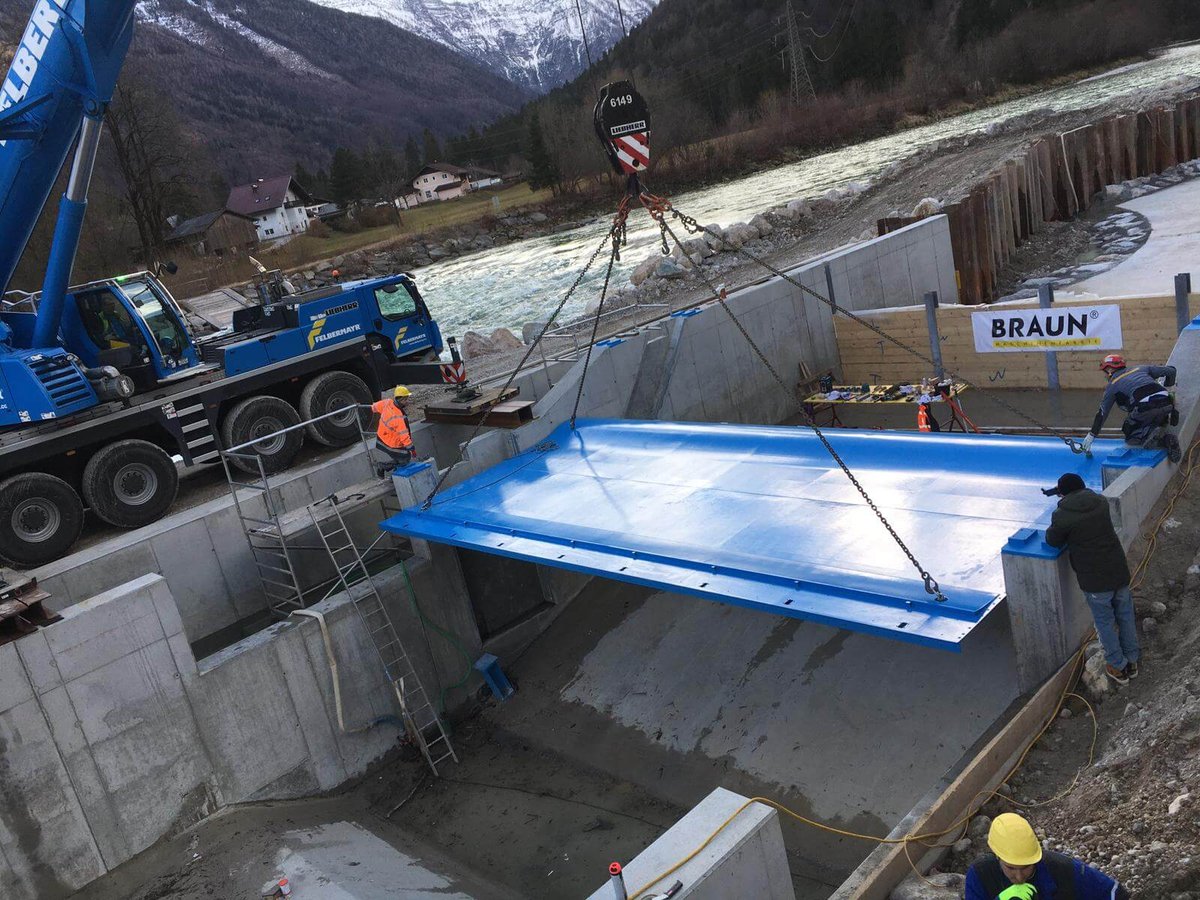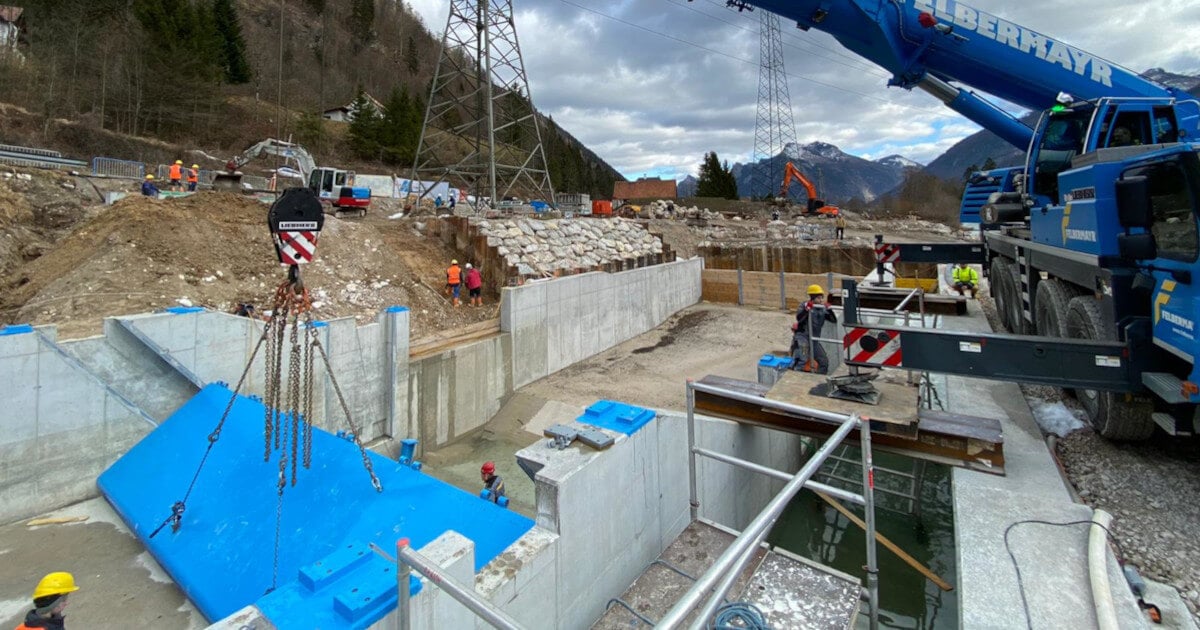Nothing is too hard for the engineer – not even building a standing river wave.
The most prominent characteristic of an engineer is that nothing is too hard for them. Somewhat less well known is probably the fact that certain questions consume them until they have found an answer to them. In the case of Benjamin Di-Qual, a passionate surfer, the question was, “How do you build a wave?” Strictly speaking, he was concerned with a standing river wave that would provide virtually endless surfing fun. The engineer and his company, concon construction consulting, finally provided the answer themselves with The Riverwave in Ebensee, Austria. The highly complex project required the collaboration of a multidisciplinary and international planning network and took four years just for the design.
 © concon
© concon
Largest built river wave in the world
At ten meters wide and around 1.5 meters high, The Riverwave is the largest standing river wave in the world. The effort required to plan and build this 120-meter-long special structure was enormous and is a reflection of the passion of real surfers. Those who travel the world in search of the most beautiful waves know how much a wave that can be used all year round and in their home country is worth to them. The net construction costs for the water sports facility, which opened in 2020, amounted to around two million euros. Daily tickets costing between €24 (on weekdays) and €29 (on weekends), surf courses, and other offers should make the operation economically viable.
 © concon
© concon
Conditions and challenges
For water protection reasons, the wave could not be built directly in the river. For this reason, the water is diverted into a canal before the natural elevation change in the Traun River and returned to the river after the artificial wave. The construction requirements also included a fish ladder, which was built parallel to the artificial wave. The channel can be completely drained with the help of dam beams at both ends and water pumps. To prevent the resulting hull from drifting away, it is fixed in place with tie rods.
 © Nico Walz
© Nico Walz
Special device for standing waves
Standing river waves are found in nature, but their occurrence strongly depends on the flow rate and water level. Of a total of 24 possible wave forms, only one is surfable (according to Ohtsu and Yasuda) – the so-called “maximum wave”. In order for the artificial wave in the Traun to take on this form and remain stable even under varying conditions in the river, a special movable device called a wave shaper was required which adapts to the different water levels. Since the required maximum wave cannot be represented in detail in a numerical calculation model, the engineers had to simulate the wave structure in advance using a physical model (with a scale of 1:8), which was built in the channel of a nearby old mill.
Find out how the planning of The Riverwave was done in detail in Part 2.






